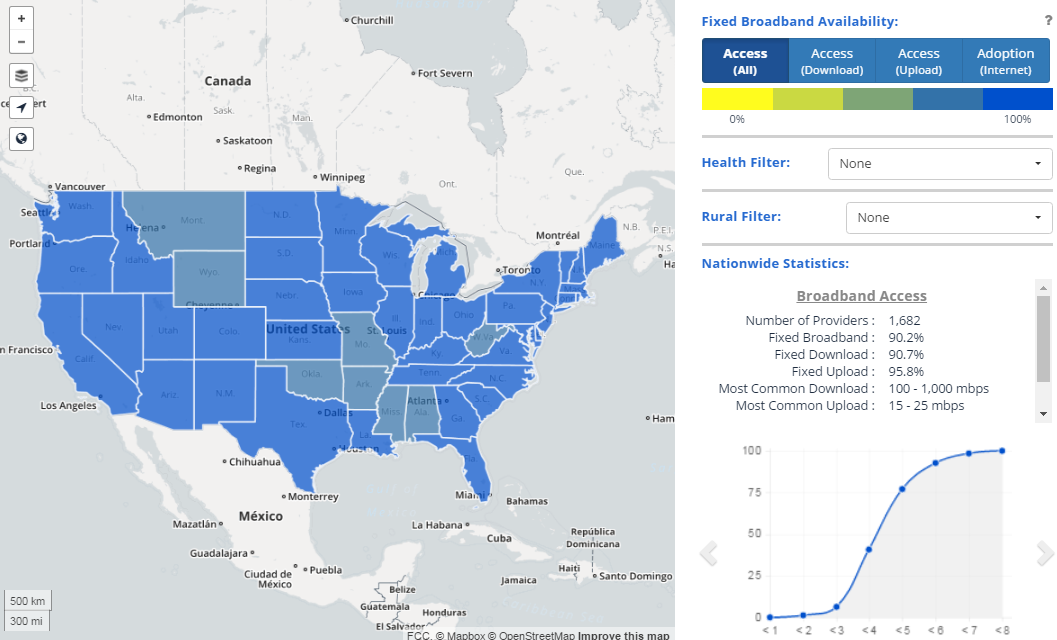
The Federal Communications Commission’s Connect2Health Task Force has launched the Mapping Broadband Health in America tool, a web-based mapping tool that will enable and inform more efficient, data-driven decision making at the intersection of broadband and health. The tool represents another step in the broader effort by the Connect2HealthFCC Task Force to further chart the broadband future of health and care.
By allowing users to ask and answer questions about broadband and health at the county and census block levels, the tool provides critical data that can help drive broadband health policies and connected health solutions for this critical space.
How It Works
The mapping tool is an interactive experience, showing various aspects of connectivity and health for every state and county in the United States. Users can generate customized maps that display broadband access, adoption and speed data alongside various health measures (e.g., obesity, diabetes, disabilities and physician access) in urban and rural areas.
These maps can be used by both public and private sectors and local communities to identify not only gaps, but also opportunities.
“We are excited to make this state-of-the-art tool available to the public,” said FCC Chairman Tom Wheeler. “The unique insights revealed by this mapping platform can be utilized by businesses and policymakers to effect change and innovation.”
Here are examples of some of the initial findings:
· The picture of health is vastly different in connected communities vs. digitally isolated communities. This holds true across access to care, quality of care and health outcome metrics. For example, obesity prevalence is 25 percent higher and diabetes prevalence is 35 percent higher in these counties (i.e., where 60 percent of households lack access to broadband and over 60 percent lack basic Internet connections at home.)
· There is a significant gap between rural and urban counties. Almost 60 percent of rural Americans live in counties that have high burdens of chronic disease as well as a need for greater broadband connectivity, while less than 5 percent of urban America falls into the same category.
“This is a groundbreaking effort at the nexus of broadband and health,” said FCC Commissioner Mignon Clyburn in a statement. “The map makes clear that there are some communities that bear a double burden…they have the lowest connectivity and highest need. Today, we identify challenges and point to sustainable and innovative solutions.
The Connect2HealthFCC Task Force welcomes suggestions and feedback as it continues to develop and refine the tool. The Task Force is planning to offer a free webinar training series this fall. Once confirmed, the dates and registration information will be publicly announced and made available on the FCC’s broadband health hub, at www.fcc.gov/health.
